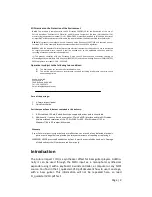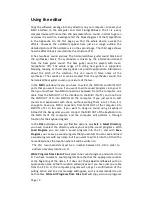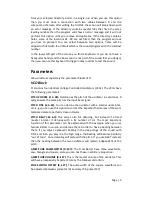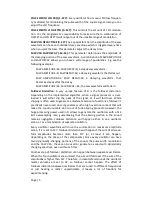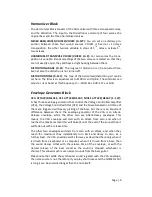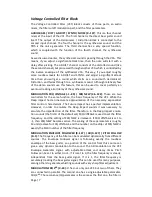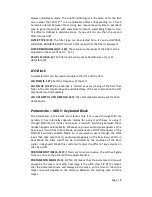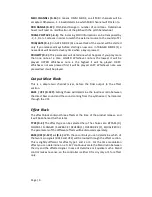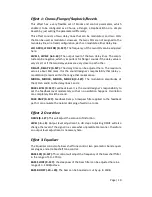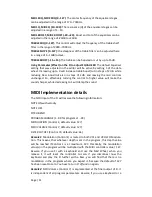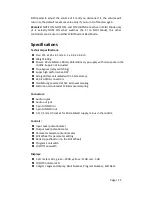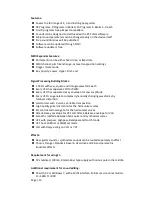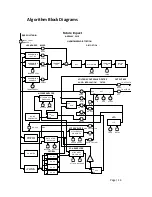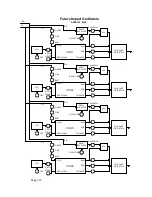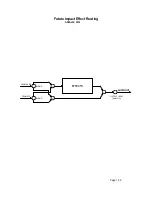
Page | 5
PULSE WIDTH LFO FRQ (1..127):
Every oscillator has its own LFO (low frequen-
cy oscillator) for modulating the pulse width of the square signal. Here you can
adjust the LFO frequency.
PULSE WIDTH LFO DEPTH (0..127):
This controls the amount of LFO modula-
tion. It is the programmer’s responsibility to make sure that a combination of
OFFSET and LFO DEPTH will not get out of the useable range of modulation.
SAW VCA DECAY TIME (0..127):
As a special function, the amplitude of the saw
waveform can have an individual decay envelope which is triggered every time
when you pick the bass. This parameter adjusts the decay time.
SAW VCA SAW DECAY (-63..63):
This parameter determines the amplitude of
the decaying portion of the saw waveform. A combination of SAW AMPLITUDE
and SAW DECAY allows you to have a wide range of possibilities. E.g. see the
following examples:
SAW AMPLITUDE=64, SAW DECAY=0; a steady saw waveform.
SAW AMPLITUDE=0, SAW DECAY=63; a decaying waveform that fades out.
SAW AMPLITUDE=32, SAW DECAY=63; a decaying waveform, that
becomes steady after the decay.
SAW AMPLITUDE=64, SAW DECAY=-63; the saw waveform will fade in.
Foldover Distortion:
A very unique feature of FI is the foldover distortion.
Depending on the implemented algorithm, when a signal processor is over-
loaded it will either clip the peak of the signal, or it will fold over. While
clipping is often used to generate a moderate amount of overtones, foldover is
practically never used since it generates such a high overtone content that will
make the sound unusable due to out of tune aliasing products. However, the
huge processing power used in FI allows to generate the oscillators with a 512
kHz oversampling rate, guaranteeing that the aliasing portion in the sound
remains negligible. Foldover Distortion will happen either in one oscillator
alone, or as a combination of separate oscillators.
Every oscillator waveform will drive the summation to maximum amplitude
alone, if it is set to 127. Foldover Distortion will happen if the sum of all wave-
form amplitudes becomes more than 127 (or, at least it can happen,
depending on the phase of the components). Since every oscillator can have
two dynamically changing portions of the sound, the pulse width modulation
and the SAW VCA, these can be used to generate a sound with dynamically
changing spectrum, even without a filter.
Another step of foldover distortion can happen between separate oscillators.
When the four oscillators are summed, the sum will fold over if the sum of the
amplitudes is higher than 127. Therefore, in clean default sounds the oscillator
master volumes are set to 32, so foldover cannot happen. The effect of
foldover distortion between oscillators that are tuned to different frequencies
or just beating is rather unpredictable, it leaves a lot of freedom for
experimenting.


